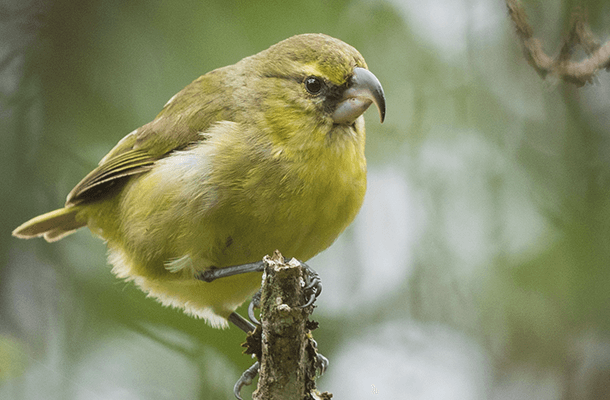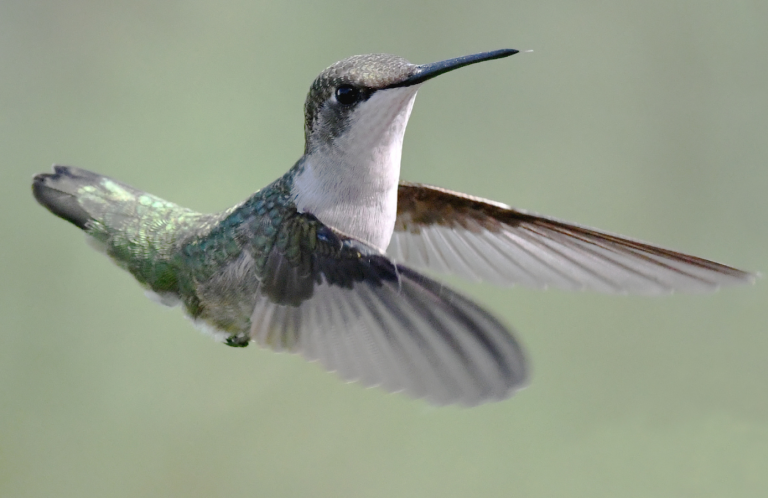New Program Rates Bird-Smart Glass Products for Homeowners and Architects
Collisions with glass windows kill hundreds of millions of birds each year in the United States, but thanks to American Bird Conservancy's new Bird-Smart Glass Program, a list of 18 tested, proven products is now available to help homeowners and architects identify simple but effective solutions to stop birds from hitting windows.

Wood Thrush, Paul Tessier/Shutterstock
Over the last six years, ABC has led testing efforts to identify a range of products that are scientifically proven to minimize the frequency with which birds collide with windows—but are also affordable and aesthetically suitable. The result, to date, is 18 products found to be effective in significantly reducing bird collisions with glass.
Six of these products are consumer materials meant for homeowners, 14 are commercial products for architects and building managers, and two of the products are appropriate for both settings. The list of Bird-Smart glass products will continue to grow as new products are tested and found effective.
“With bird-friendly design requirements in over a dozen U.S. cities, it is more important than ever to get the word out about effective materials to save birds' lives,” said Dr. Christine Sheppard, ABC's Bird Collision Campaign Manager. “With over half of all bird collisions coming from commercial buildings, architects have a key role to play in ending this tragedy—but individual homeowners need to play a part, too.”
Reducing a Deadly Threat
Peer-reviewed scientific research has found that between 365 million and 988 million birds die every year in the United States after colliding with buildings. Glass that reflects landscapes and the sky is especially dangerous for birds because they can't distinguish the reflection from the real world.
Virtually every bird species in North America is affected by glass collisions. But migratory birds and yard birds are among the most common species affected. This includes species that are declining across their ranges, such as Wood Thrush, White-throated Sparrow, Painted Bunting, and Anna's and Ruby-throated Hummingbirds.

Painted Bunting, Spark Dust/Shutterstock
Products featured in ABC's Bird-Smart Glass Program—including patterned glass, window films and tapes, and external screens —fit every style, budget, and climate. In order to be verified as Bird-Smart, they must have documented evidence proving their effectiveness, either through controlled tests or field studies. Although no material can be guaranteed to eliminate all collisions, ABC has identified the best available products for private homes as well as commercial buildings.
Rigorous Tests
Since 2008, ABC, in partnership with New York City Audubon, Ennead Architects, and others, has tested more than 150 materials, including products from more than 20 manufacturers, to evaluate their effectiveness in reducing bird collisions. The tests are conducted with wild birds—primarily migratory songbirds—captured for other scientific studies.
Before their release, the birds are put into a 30-foot-long wooden tunnel. At one end of the tunnel is a pair of glass panes: a sample of a material being tested, and a clear pane of glass, which serves as the control. To simulate reflections, both panes are illuminated by sunlight bounced from mirrors against a backdrop of a sky pattern.

Flight tunnel at Powdermill Avian Research Center, Pennsylvania
Once inside the tunnel, the birds fly toward one of the panes. For a product to be deemed Bird-Smart, birds must avoid flying into the tested material in at least 70 percent of test flights. A nearly invisible net prevents birds from injuring themselves in the process, and they are released within a minute of the test.
A Push for Bird-Friendly Design
The products included in ABC's Bird-Smart Glass Program meet guidelines developed in 2010 by the U.S. Green Building Council, which operates the LEED certification program for sustainable building design. In collaboration with ABC, the Council developed the guidelines to help architects design buildings that prevent or minimize birds hitting windows by limiting the use of glass, incorporating glass with bird-friendly patterns, or designing features like shades to reduce threat of collisions. (Go in-depth with our Bird-friendly Building Guide, updated for 2015.)

Birdsaver Zen Curtains at Bosque de Paz Ecolodge, Costa Rica
With the new list of Bird-Smart products, architects and homeowners can take the next step in obtaining materials that help them put these recommendations into practice. The list of recommended materials will continue to be expanded as manufacturers of glass, window films, and external screening systems create new products or document the effectiveness of existing ones.
"This new market of bird-friendly products will go a long way toward reducing a tremendous threat to birds," Dr. Sheppard said. "Bird-Smart glass can and should be a standard component of sustainable design. We hope manufacturers develop even more products that help architects and homeowners make their buildings and homes bird-friendly."
Editor's note: We are grateful to the Leon Levy Foundation for its ongoing support of our work to reduce bird mortality from collisions.


















































